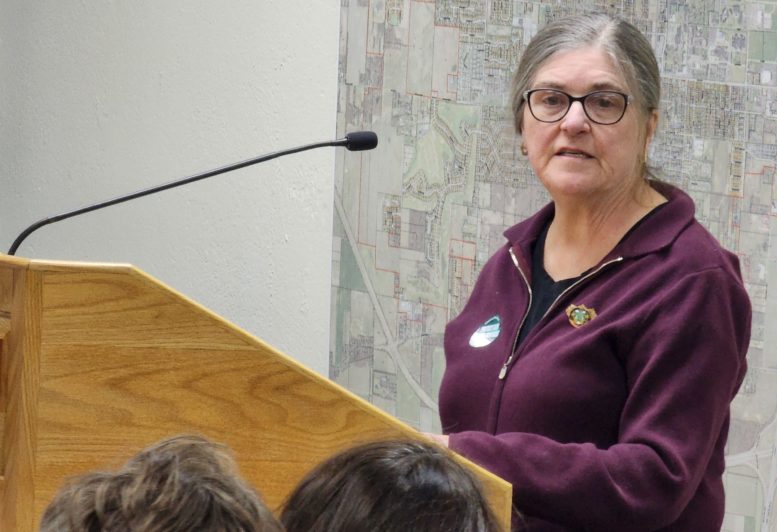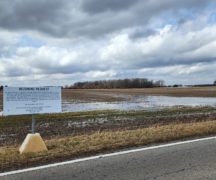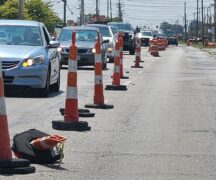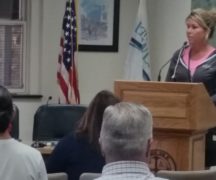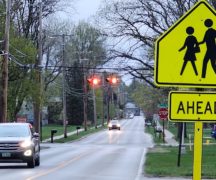By JAN LARSON McLAUGHLIN
BG Independent News
A group of citizens presented Bowling Green City Council with a Plan B for the city’s zoning code update on Tuesday evening.
Opposed to a new zoning classification called Pedestrian Residential, the citizens have been consistently showing up at City Council meetings to express their displeasure. They fear the new zoning will encourage more rental housing and businesses in their older neighborhoods.
On Tuesday evening, council heard from long-time residents wanting to preserve their neighborhoods and a new business owner who decided to not buy a home in Bowling Green.
Sean Eblin, who opened a business in the 100 block of East Court Street last April, said he wanted to purchase a home in Bowling Green rather than continue commuting from Toledo. But Eblin was concerned about the controversy stirred by the zoning proposal.
“We ended up buying a lovely home – but 27 miles from our business,” he said.
Council also heard from residents who want to protect their neighborhoods from more rentals.
“As a long-time resident, we want to know you care about us,” said Faith Elsea.
City Council President Mark Hollenbaugh bristled at one speaker characterizing council as “pushing” the zoning change.
“I don’t feel like City Council is pushing anything,” he said, noting that public input is still being accepted.
Hollenbaugh reported that three meetings have been scheduled next month to continue the zoning update process. They are set for:
- March 13, at 6 p.m., in the Veterans Building in City Park, for a work session with the administration and council.
- March 23, at 6 p.m., in the Veterans Building, for a public forum.
- March 27, at 6 p.m., in the Veterans Building, for council’s final work session on the zoning update.
No public input will be accepted during the work sessions.
After the zoning legislation is introduced, a public hearing will be set, Hollenbaugh said.
Ten people signed up Tuesday evening to speak against the zoning plan – with most relinquishing their minutes to Rose Drain, who has been working with a grassroots group on an alternative plan, intended to help preserve the areas of the city planned for the controversial “Pedestrian Residential” zoning.
Drain told council she represented more than 600 people from all four wards of the city, plus owners of 28 downtown area businesses – all who signed a petition opposed to the PR zoning.
The area proposed for the new zoning covers approximately 104 residential blocks surrounding Bowling Green’s central business district, stretching from Poe Road to Napoleon Road. Residents of the area are concerned the zoning change would allow businesses in residential neighborhoods and increase housing density.
Drain said the citizens want the city to preserve these older neighborhoods, listing off their qualities of:
- Being historic with single-family homes built in the late 1800s through the 1950s. The homes are affordable, well-built and solid.
- Having yards with lawns, shrubs, gardens and decades old shade trees.
- Being diverse in size and styles.
- Being within walking distance of downtown, including several businesses, eating establishments, offices and the library.
“The character and charm of the central residential neighborhoods are worth preserving,” Drain said. “To that end, we urge City Council to adopt our alternative to the PR district – the Central Residential District.”
“We believe that the Central Residential District is a distinct area of the city with a unique identity and purpose,” of preserving the residential character of the older neighborhoods in the central part of Bowling Green, she said.
Unlike the proposed PR zoning, the Central Residential District would not increase lot coverage or shrink setbacks.
In the proposal presented to council Tuesday evening, the Central Residential zoning would permit one-unit dwellings, side yard or rear yard parking, adult group homes, and passive greenspace.
Uses that would alter or diminish the character of the areas would not be allowed, such as all business uses and two-unit dwellings.
“There are so many homes in these neighborhoods which currently are divided into apartments. These are income producing properties – in effect, businesses,” Drain said.
“Keep neighborhoods as neighborhoods – charming, diverse, historic, eclectic spaces to call ‘home,’” she said.
Most recent draft of proposed BG Zoning Code update available on city’s website

